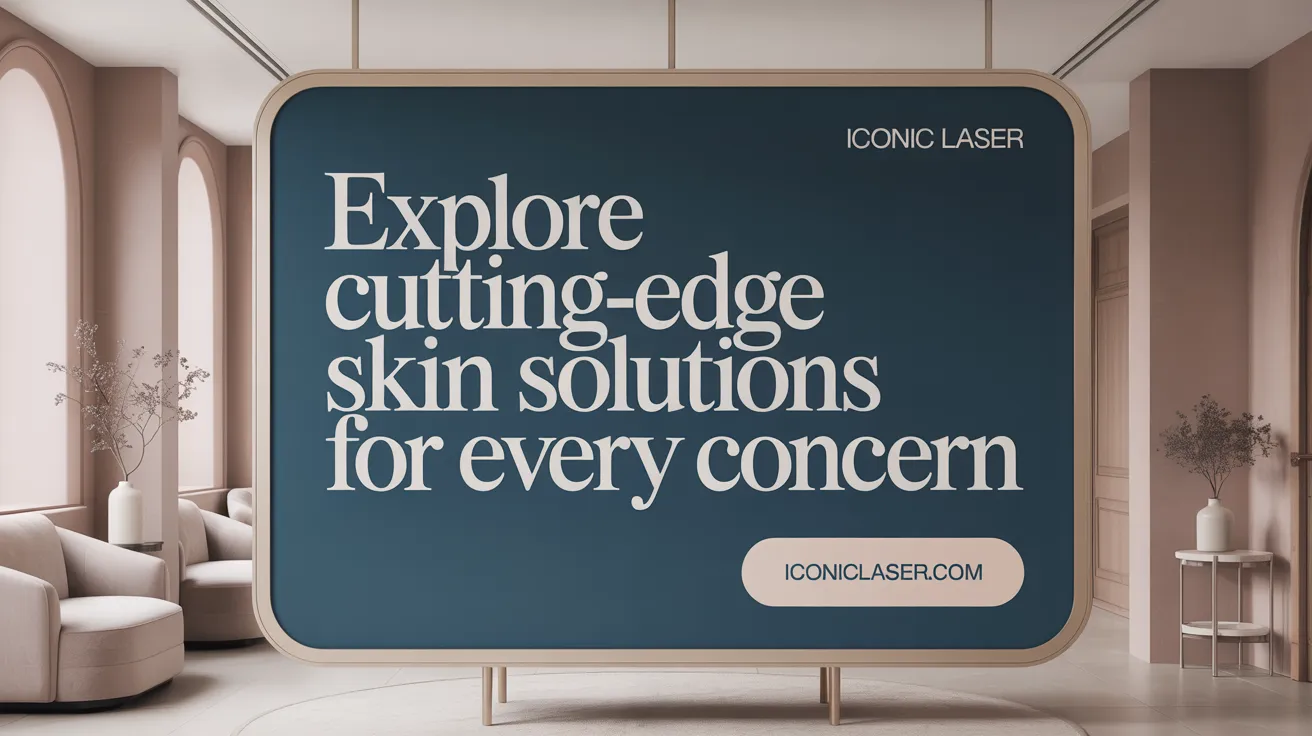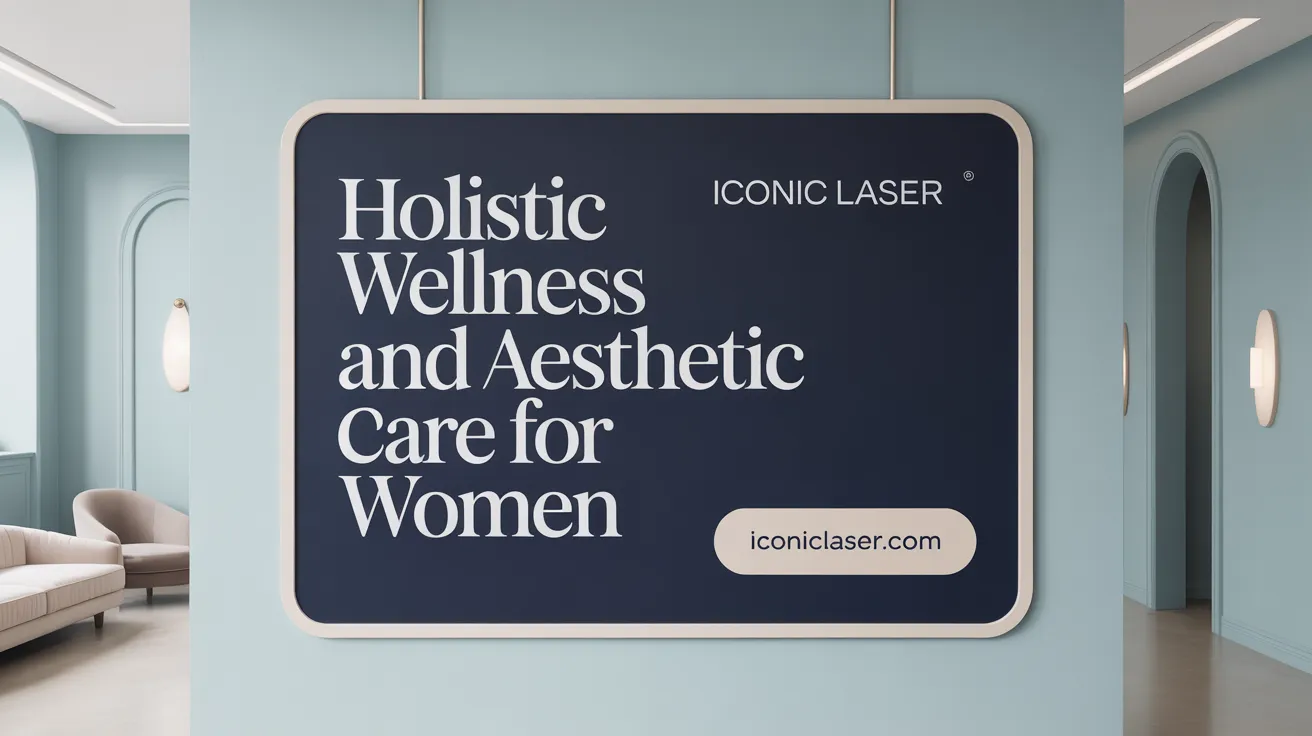Introduction to Patient-Centered Safety in Medical Aesthetics
The Importance of Patient-Centered Safety Protocols
Patient safety is paramount in medical aesthetics, where procedures directly affect patients' appearance and well-being. Implementing comprehensive safety protocols ensures patients receive treatments that are both effective and secure. Thorough patient assessments, clear communication about risks and benefits, and diligent follow-up care are critical components of these protocols. Documentation plays a fundamental role in reducing malpractice risks, safeguarding both patients and practitioners.
Overview of Medical Aesthetic Practice Growth and Challenges
The field of medical aesthetics is experiencing rapid growth; the US Bureau of Labor Statistics projects a 17% increase in specialists from 2021 to 2031. This expansion creates opportunities to offer popular non-surgical procedures, such as Botox and dermal fillers, which accounted for nearly half of such treatments in 2019. However, practice expansion demands careful evaluation of resources, insurance, legal requirements, and competition.
Professionals must obtain proper certification and training tailored to aesthetic medicine to ensure safe and effective care. Additionally, adherence to strict medication, laser safety, and staff qualification protocols helps manage risks associated with these specialized treatments. A patient-centered approach prioritizes informed consent as an interactive process and emphasizes continuous care, underpinning a responsible and successful aesthetic practice.
Comprehensive Range of Advanced Dermatological Treatments

What advanced dermatological treatments does a premium medical aesthetic clinic offer?
A premium medical aesthetic clinic in Troy, Michigan, provides a wide array of advanced dermatological treatments to meet diverse skin concerns. These include chemical peels that refine skin texture and tone, laser skin resurfacing to diminish wrinkles and sun damage, and microneedling that stimulates collagen for improved skin elasticity. The clinic also specializes in pigmentation correction using laser therapies and targeted serums, alongside effective options for reducing acne scars. For more on Opening an aesthetic medicine practice, see this resource.
How are treatments tailored to individual skin needs?
Treatments are personalized based on thorough patient assessments to ensure efficacy and safety. By considering each patient's unique skin condition and concerns, practitioners develop customized plans that maximize results while minimizing downtime. This personalized approach also involves discussing potential risks, benefits, and alternatives, ensuring informed consent in dermatology as part of a shared decision-making process.
What cutting-edge technology is utilized in these treatments?
The clinic integrates state-of-the-art technology such as advanced laser systems and dermatology imaging software. These tools enhance precision in treatment delivery and diagnostic accuracy, reducing the chances of misdiagnosis or errors during procedures. Ensuring proper training and certification of staff on this equipment advances patient safety and optimizes outcomes, aligning with recommended training for aesthetic medicine certification.
| Treatment Type | Purpose | Technology Used |
|---|---|---|
| Chemical Peels | Improve skin texture and tone | Specialized peeling agents |
| Laser Skin Resurfacing | Reduce wrinkles and sun damage | Advanced laser systems |
| Microneedling | Stimulate collagen production | Precision needle devices |
| Pigmentation Correction | Correct uneven pigmentation | Laser therapies, serum infusions |
| Acne Scar Reduction | Minimize appearance of scars | Laser and microneedling combos |
Facial Enhancement Procedures with a Focus on Safety

What cosmetic treatments are available for facial enhancement at a medical aesthetic clinic?
At our medical aesthetic clinic in Troy, Michigan, we provide a comprehensive range of facial enhancement treatments tailored to promote a natural, youthful appearance. Our services include injectable options such as Botox and various dermal fillers composed of substances like hyaluronic acid, biostimulators, allografts, and autografts. These procedures are administered by providers who have undergone rigorous training and certification to ensure efficacy and safety. We also offer advanced skin treatments like laser skin resurfacing and microneedling, designed to rejuvenate skin texture and appearance.
How do patient education and aftercare support safety and outcomes?
Patient education plays a crucial role in our practice. Before any treatment, patients receive thorough information about the procedure, including potential risks, benefits, and alternatives. This shared decision-making process ensures fully informed consent beyond merely signing forms, following best practices in informed consent in dermatology.
Aftercare instructions are equally important to optimize results and minimize side effects. Patients are advised to avoid blood-thinning medications when possible and use supplements like Arnica to reduce bruising. Clear guidance on post-treatment care—such as avoiding strenuous activity, applying ice, and monitoring for adverse effects—is provided to promote smooth recovery and enhance patient safety strategies in dermatology.
What is the typical procedure duration and what safety measures are observed?
Facial enhancement treatments generally take between 15 to 60 minutes depending on the type and extent of the procedures. The minimal downtime allows patients to return to their daily activities promptly.
Safety protocols are rigorously implemented, including detailed patient assessments, accurate documentation, and appropriate follow-up. Our clinic follows guidelines to ensure staff are properly trained and licensed, equipment is maintained, and patient responses are carefully monitored. This dedication to safety minimizes risks and supports successful, natural-looking results that enhance patient confidence, aligned with risk management through staff verification.
Safe and Effective Body Contouring Options

What body contouring techniques are commonly offered by advanced medical aesthetic clinics?
Advanced medical aesthetic clinics provide a range of body contouring procedures tailored to individual patient needs. These include non-invasive treatments like CoolSculpting, which uses cryolipolysis to freeze and naturally eliminate fat cells without surgery. Radiofrequency and laser lipolysis therapies are also popular; they promote skin tightening and fat reduction through thermal energy, providing subtle contouring with minimal discomfort.
For patients seeking more precise shaping, minimally invasive liposuction techniques may be available, offering targeted fat removal with smaller incisions and reduced recovery time compared to traditional surgery.
What are the non-invasive and minimally invasive options in body contouring?
Non-invasive methods such as cryolipolysis, radiofrequency, and laser-based treatments are favored for their safety profiles and minimal downtime. These procedures avoid the risks associated with surgery, including infection and scarring. Minimally invasive options, like tumescent liposuction or laser-assisted liposuction, require only small incisions and local anesthesia, balancing effectiveness with a quicker return to daily activities.
What patient safety considerations must be prioritized during body contouring procedures?
Patient safety is paramount in aesthetic treatments. Clinics must conduct thorough pre-procedure assessments to determine patient suitability and medical history. Informed consent should clearly communicate procedure risks, benefits, and alternatives, ensuring patients make knowledgeable decisions.
Strict adherence to infection control, precise documentation, and appropriate use of protective equipment, especially during laser skin resurfacing or radiofrequency treatments, reduce complication risks. Practitioners must maintain current training and licensure, with continuous performance evaluations to uphold high care standards.
By combining advanced technology with stringent safety protocols, medical aesthetic clinics can provide effective body contouring options that enhance patient outcomes and satisfaction. For detailed guidance on patient safety strategies in dermatology and insights on opening an aesthetic medicine practice, clinics can refer to these comprehensive resources.
Integrating Women's Wellness into Medical Aesthetic Care

What treatments are included under women's wellness services in a medical aesthetic clinic?
Women's wellness treatments in the medical aesthetic field cover a broad spectrum aimed at enhancing both health and quality of life. Commonly offered services include hormone replacement therapy, which helps balance hormones related to aging and menopause, vaginal rejuvenation procedures that restore comfort and confidence, and pelvic health treatments addressing conditions like incontinence.
In addition to these, clinics frequently provide minimally invasive options for circulatory health such as endovenous laser ablation, sclerotherapy, and ambulatory phlebectomy for varicose vein management. These treatments use advanced laser and radiofrequency technologies, including laser skin resurfacing, ensuring safety and personalized care.
How does combining aesthetic and health optimization improve patient outcomes?
Integrating wellness and aesthetic treatments allows clinics to support patients comprehensively. This approach not only improves physical appearance but also tackles underlying health issues, fostering overall wellbeing. For example, hormone therapy can enhance energy and mood alongside aesthetic interventions like Botox and dermal fillers services.
Such combination treatments require thorough patient assessment and documentation, including informed consent in dermatology that discusses benefits, risks, and alternatives, essential for safe practice and positive outcomes.
Why is patient-centered care important in women's wellness?
Patient-centered care is fundamental in wellness-focused aesthetic clinics. It ensures treatments are tailored to individual health profiles, preferences, and goals. Open communication fosters shared decision-making, increasing patient satisfaction and safety.
Practitioners must maintain rigorous training for aesthetic medicine certification to safely provide these therapies, supported by detailed documentation and follow-up management for high-risk patients. This vigilance helps prevent complications, supports informed consent, and ensures adherence to state regulations and safety protocols.
By prioritizing customized wellness alongside aesthetic care, medical clinics can enhance both the health and confidence of women, delivering holistic treatment experiences that respect and respond to unique patient needs.
Implementing Thorough Patient Assessments and Documentation

Why Is Detailed Patient Assessment Important?
Thorough patient assessments form the foundation of safe and effective aesthetic medicine practice. They enable practitioners to understand individual patient health, identify risk factors, and tailor treatments accordingly. Detailed assessments help prevent complications and ensure that aesthetic procedures are suitable for each patient’s unique needs. For more on assessing practice suitability for aesthetics, see Opening an aesthetic medicine practice.
What Are Essential Documentation Practices to Reduce Malpractice Risks?
Complete and accurate documentation is critical in minimizing malpractice risks. Practitioners should document:
- Comprehensive patient health history and examination findings.
- Details of treatments provided and patient responses.
- Aftercare instructions and follow-up plans.
Using dermatology imaging software for lesion documentation and precise lesion mapping can improve accuracy and reduce misdiagnosis, particularly when multiple lesions are involved. Additionally, medication safety protocols in dermatology—such as careful drug selection, labeling, and storage—help prevent errors.
How Should Informed Consent Be Conducted, Especially for Off-Label Treatments?
Informed consent is more than a signed form; it is a shared decision-making process. This involves clearly explaining the risks, benefits, and available alternatives to patients. For off-label treatments like platelet-rich plasma therapies, discussing the specific uncertainties and potential risks is essential. Detailed documentation of this conversation helps protect both patients and practitioners. For more information, refer to Informed consent in dermatology.
By integrating comprehensive assessments, meticulous documentation, and transparent informed consent processes, aesthetic medicine providers can enhance patient safety and reduce liability.
Ensuring Medication and Laser Safety in Aesthetic Clinics
What Are Crucial Medication Safety Protocols in Aesthetic Clinics?
Medication safety protocols in aesthetic clinics are essential to preventing errors and ensuring patient well-being. Clinics must carefully select and store medications, maintaining clear documentation related to drug information. Special attention should be paid to look-alike and sound-alike medications, as these pose a higher risk of errors in administration. For detailed guidelines, refer to Medication safety protocols in dermatology.
How Should Laser Safety Be Managed in Medical Aesthetic Procedures?
Laser safety measures comprise several critical practices to protect both patients and staff. Protective equipment appropriate to the specific laser in use must be provided and worn. Equipment maintenance schedules should be strictly followed to ensure functionality and safety. Additionally, protocols must establish clear supervision responsibilities during laser operation to prevent injury, especially to vulnerable skin and eyes. More information can be found at Laser safety measures and training. For advanced insights, you can also explore laser skin resurfacing and laser skin resurfacing.
What Are the Staff Training and Supervision Requirements?
All practitioners performing aesthetic procedures must be fully trained and qualified, complying with state regulations. Supervisory frameworks are necessary to oversee safe practice standards. Moreover, verifying current licensure of staff members, conducting routine performance evaluations, and maintaining thorough documentation contribute to effective risk management and patient safety. For insights on qualifications and training, see Qualifications for cosmetic procedure practitioners and Training for aesthetic medicine certification. Additional resources include Opening an aesthetic medicine practice and Adding Botox and dermal fillers services.
| Aspect | Key Practices | Purpose |
|---|---|---|
| Medication Safety | Careful drug selection, storage, documentation | Minimize medication errors |
| Laser Safety | Protective gear, equipment maintenance, supervision | Prevent laser-related injuries |
| Staff Training & Supervision | Verified licensure, ongoing training, supervision | Ensure qualified and safe practice |
Staff Qualification, Licensure, and Continuous Training for Risk Management
How Can Staff Qualifications and Licensure Be Verified?
Ensuring that all staff involved in aesthetic medicine practice hold current and valid licensure is fundamental to safe patient care and legal compliance. Practices should regularly verify licenses through official state boards or regulatory bodies to confirm credentials are up-to-date and valid. This verification protects patients and minimizes liability risks for the practice by guaranteeing that only qualified personnel deliver specialized treatments. For more on qualifications for cosmetic procedure practitioners and risk management through staff verification, see patient safety strategies in dermatology.
Why Is Ongoing Training and Performance Evaluation Important?
Continuous education and training are essential in aesthetic medicine due to rapidly evolving practices and technologies. Staff must complete certified training programs, such as those offered by the American Association of Aesthetic Medicine and Surgery (AAAMS), which provide comprehensive knowledge on emerging techniques and safety protocols. Performance evaluations enable practitioners to assess staff competency, identify areas needing improvement, and ensure consistent adherence to approved procedures. These measures maintain high standards of care, reduce medical errors, and enhance patient satisfaction. Learn more about training for aesthetic medicine certification and AAAMS training programs for aesthetics including virtual and hybrid training options.
How Should Compliance Be Documented for Safety and Liability Prevention?
Meticulous documentation of staff licensure status, training completion, and performance evaluations is critical. Maintaining records demonstrates the practice’s commitment to safety and regulatory compliance, which is crucial in mitigating malpractice claims. Detailed logs should include dates of training, certification renewals, and evaluations to provide a clear audit trail. This documentation supports the practice during inspections or legal inquiries and ensures that all team members meet the professional benchmarks required for delivering aesthetic services. Refer to documentation for malpractice risk reduction and informed consent in dermatology for detailed patient safety strategies.
Follow-up Care and Communication as Pillars of Patient Safety
Why is follow-up management significant in aesthetic medicine?
Follow-up care is essential in aesthetic medicine to monitor treatment outcomes and promptly identify any complications. It ensures that patients respond well to procedures and receive timely interventions if adverse effects arise. Without appropriate follow-up, there can be delays in diagnosing problems or managing side effects, which may jeopardize patient safety and treatment efficacy. For more on this, see Follow-up management for high-risk patients.
How should practitioners handle patients with risk factors or those refusing tests?
Patients presenting with risk factors or those who decline recommended diagnostic tests require carefully tailored management. Practitioners should document all discussions thoroughly, clearly explaining the potential risks and benefits of proceeding or delaying treatment. Maintaining open communication helps in making informed decisions together. In such cases, follow-up appointments should be scheduled meticulously to track any developments and to reinforce the importance of necessary evaluations. Relevant information can be found under Documentation for malpractice risk reduction.
What are the best communication and documentation strategies?
Clear, comprehensive documentation includes recording patient assessments, informed consent conversations, treatment details, and follow-up plans. Practitioners should use detailed notes and, where available, dermatology imaging software for lesion documentation for precision. Regular updates should be communicated directly to patients, ensuring transparency about their condition and next steps. These strategies reduce malpractice risks and foster trust between patients and providers, strengthening overall care quality. For more tips on safety, see Patient safety strategies in dermatology.
Conclusion: Upholding Patient Safety as the Foundation of Aesthetic Excellence
Patient-Centered Safety Protocols Are Essential
Patient safety remains the cornerstone of a successful aesthetic medicine practice. With the growing demand for treatments such as Botox and dermal fillers, medical professionals must prioritize comprehensive patient assessments, clear and informative consent processes, and meticulous documentation. These steps not only reduce malpractice risk but also foster trust and positive patient outcomes.
The Role of Thorough Documentation and Follow-Up
Detailed records—covering treatment decisions, patient responses, and aftercare—are vital. In particular, accurate documentation of lesion locations, medication administration, and procedural details backed by technological tools like dermatology imaging software enhance diagnostic accuracy and safety.
Training and Licensed Practice Ensuring Quality
Providers must undergo specific training and certification to perform aesthetic procedures safely. Adhering to state regulations and verifying licensure status helps uphold standards and prevent liability issues. Equally important is rigorous staff supervision and ongoing performance evaluations.
Advancing Medical Aesthetic Safety
Looking ahead, embracing evolving technologies and innovative training options, such as hybrid and virtual certifications, will further strengthen safe practice frameworks. Integration of laser safety protocols and medication management systems underscores a commitment to injury prevention.
By embracing patient-centered safety protocols, aesthetic medicine practitioners can deliver cutting-edge, safe, and personalized care that meets evolving patient expectations and regulatory standards.
